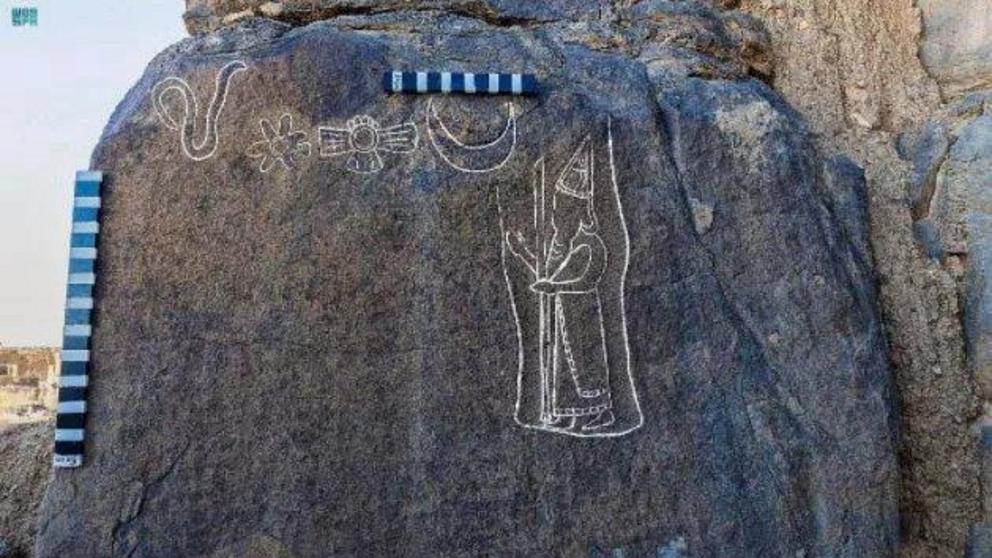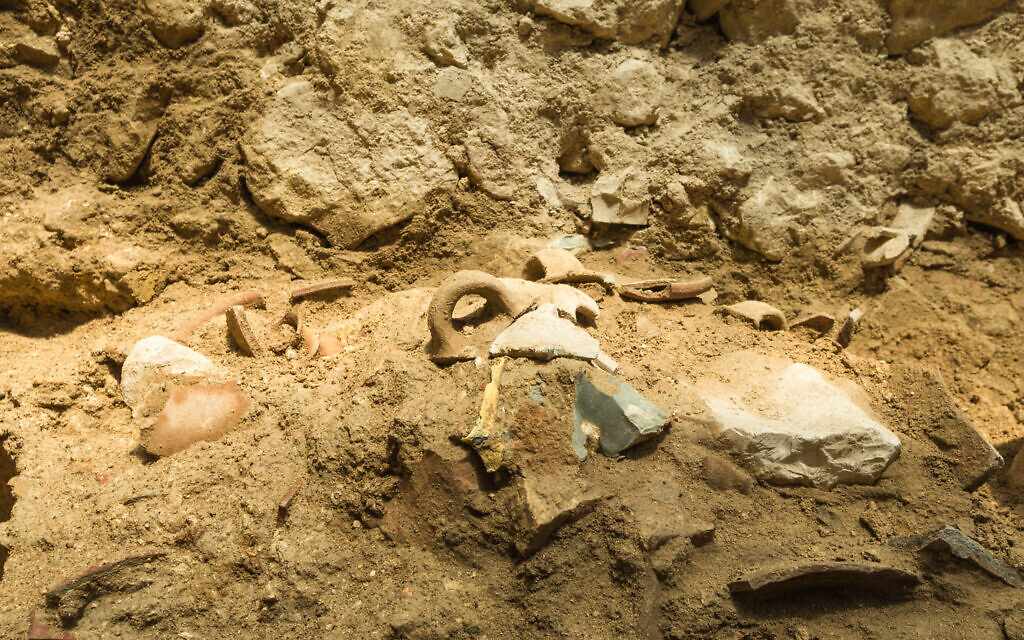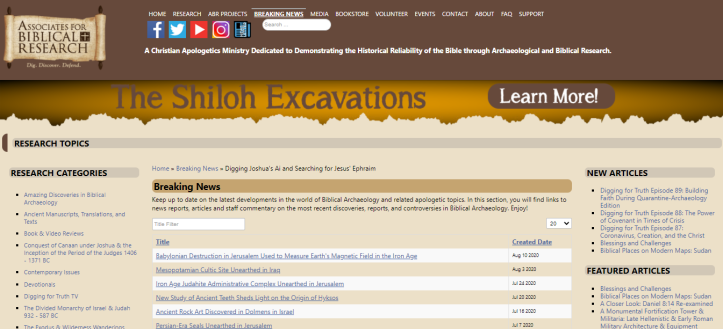
This month, news from the world of biblical archaeology involved discoveries related to a Babylonian king, a Philistine battle, and the earthquake in the days of King Uzziah. Here were the top three reports in biblical archaeology for August 2021.
3. New Nabonidus Inscription Discovered in Saudi Arabia

The Saudi Commission for Tourism and National Heritage recently announced the discovery of a 2550-year-old inscription from the Babylonian king, Nabonidus. The engraving was carved on a basalt stone at Al Hait in the Hail region of northern Saudi Arabia. It depicts King Nabonidus holding a scepter along with images of a snake, flower, a stylized sun-disk with wings, and a crescent moon. Beneath the images are 26 lines of cuneiform text, the longest cuneiform inscription ever discovered in Saudi Arabia. It has not been fully deciphered or published yet. While Nabonidus is not mentioned by name in the Bible, his son and co-regent, Belshazzar, was on the throne in Babylon when Daniel read the writing on the wall to him the night the city fell to the Medes and Persians (Dan. 5).
OFF-SITE LINK: https://www.livescience.com/longest-cuneiform-inscription-last-babylon-king-saudi-arabia.html
2. Missing Fortifications May Be the Spot Hazael’s Army Breached the City Walls at Gath

Archaeologists excavating at Tell es-Safi (biblical Gath) believe they have discovered the spot where Hazael, the Aramean king of Syria, breached the city walls. The Bible records that “Hazael king of Syria went up and fought against Gath and took it” (2 Ki 12:17). Over the years, the excavation team at Gath has unearthed evidence of Hazael’s destruction (ca. 830 BC), in numerous places throughout the Philistine city. This year, while excavating near the “Water Gate,” an entrance that was used to access the local well and a stream, the team discovered that a section of the wall was missing. The Water Gate, like the rest of the city, was heavily fortified, with walls that were more than three meters thick, constructed of mudbrick on top of massive stone foundations. Next to the gate, the walls are missing for a 10-meter section. The team at Tell es-Safi noted that it appears that someone worked hard to remove the foundation and the brick wall, and they believe that it was here, at the lowest part of the city, Hazael and his army breached the walls of Gath.
OFF-SITE LINK: https://www.haaretz.com/israel-news/in-a-seinfeld-moment-israeli-archaeologists-hail-momentous-find-of-nothing-1.10076941
1. Evidence of Earthquake from the Time of King Uzziah Discovered in Jerusalem

Archaeologists excavating in Jerusalem, near the Temple Mount and a First-Temple-era wall have unearthed evidence of an 8th century BC earthquake. The earliest floor of the southernmost room of a building bore evidence of destruction, but not by fire, and was dated to a time period when no known conquest of Jerusalem occurred. Stones from an upper part of the northern walls had collapsed, shattering a row of vessels that had been along the wall beneath. The excavation directors from the Israel Antiquities Authority, Dr. Joe Uziel and Ortal Chalaf, believe this corresponds to the great earthquake which occurred in the days of King Uzziah, and is mentioned in Amos 1:1 and Zech. 14:5. Archaeological evidence for “Uzziah’s earthquake” has been found at other sites in Israel, including at Hazor and Tell es-Safi/Gath, but this is the first time archaeologists have identified evidence of the earthquake in Jerusalem. A similar 8th-century destruction layer was noted in a collapsed building 100 meters south of the current dig, which was excavated by Yigal Shiloh in the 1970’s, but it was not associated with Uzziah’s earthquake at that time. The evidence will be presented to the public in a research article and lecture on September 2, 2021 at the City of David’s Megalim Conference.
OFF-SITE LINK: https://www.timesofisrael.com/archaeologists-unearth-1st-jerusalem-evidence-of-quake-from-bibles-book-of-amos/
Stay Up-To-Date
Get the latest BREAKING NEWS in biblical archaeology each week here: https://biblearchaeology.org/current-events-list

